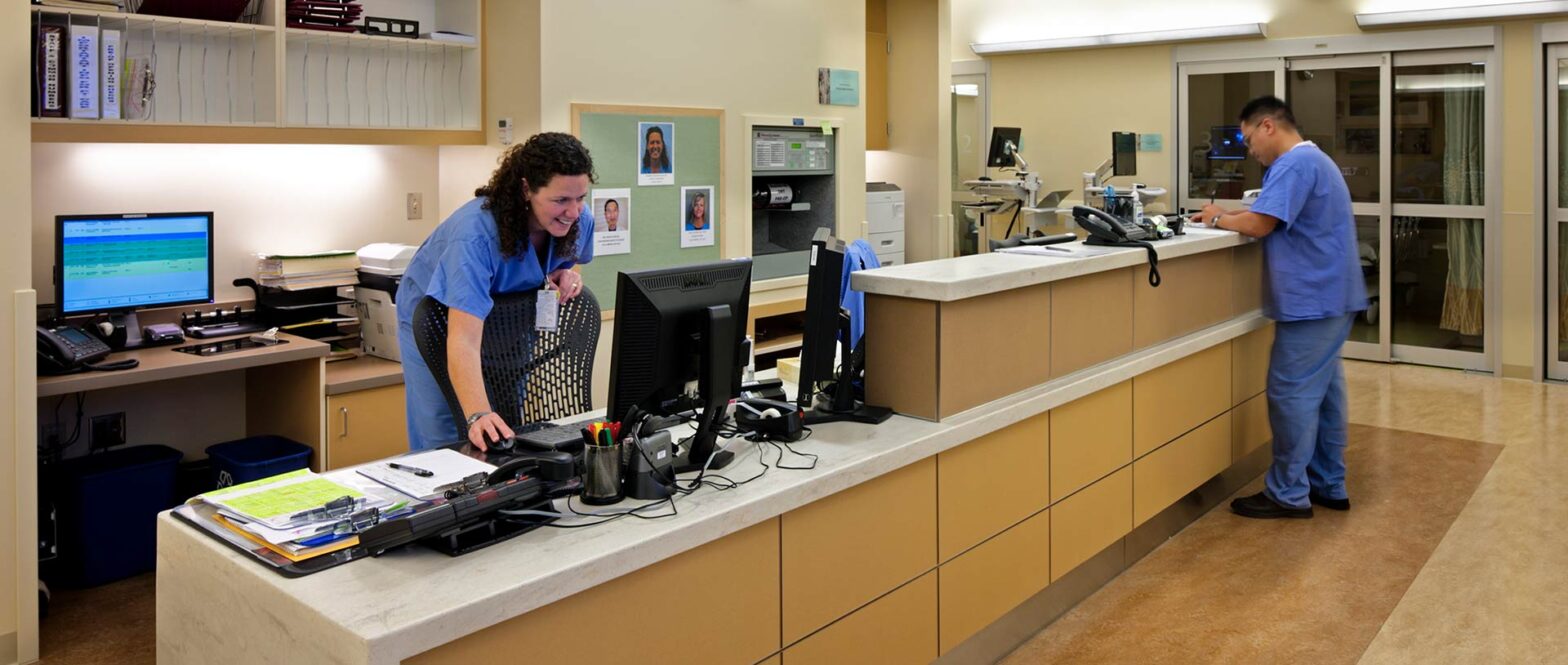Like most idioms, the expression “Safety First” means more than the sum of its grammatical parts. What Safety First really means is that the most important thing is to be safe. And there are few places more important than healthcare environments to make safety a number one priority.
So what have we learned as we design healthcare environments to prevent injury, minimize human effort and actually promote health and safety?
Here are the best ways to understand and improve design for patient and staff safety in healthcare facilities:
- Use evidence-based design to create environments that support positive health outcomes.
- Conduct research to inform design for a safer physical environment.
- Expand the role of the healthcare risk manager in facilities planning and design.
- Engage clinical stakeholders in deep collaboration with the design team.
Evidence-based design, or EBD, is defined as the process of basing decisions about the built environment on credible research to achieve the best possible outcomes. Healthcare architects and clinicians are gradually becoming aware of the evidence-based design potentials, and rigorous knowledge is growing and available for access. However, only a minority of them is seriously engaged in a depth beyond the most widely published studies in popular magazines. This process requires a deep immersion into available research, and analyzing this information critically so that the applicability is appropriate. In 2010, the Center for Health Design created the Knowledge Repository, with primary sponsorship by the American Institute of Architects Academy of Architecture for Health. The Knowledge Repository now contains over 3,700 articles, and a major focus of the research collected relates to improving patient and staff safety. This has made it possible, though not easy, for architects to use a compelling body of rigorous research findings to support effective design strategies.
There are three types of research supporting effective design solutions:
- Evidence clarifying the problem: Designers are often not aware of a problem, so they do not look for evidence of a solution. This type of research is very helpful to raise awareness, which is the first step in developing a design strategy
- Evidence of successful design solutions: There is a significant body of knowledge in some areas of research which can be searched by designers and analyzed for potential application to a design project. However, the potential danger is that a poorly informed designer may not carefully examine the conditions under which a certain design strategy is successful, and may apply it in an inappropriate circumstance. Thus, for this type of applied research to be effective, the designer must be adequately educated and judicious
- Design process as research: Approximately a decade ago, a process was codified by industry leaders and a certification was developed for individuals to obtain called Evidence Based Design Accreditation and Certification, or EDAC. EDAC works like this: A project team of designers, health system administrators and clinicians develop a hypothesis (based on a literature search) that the design approach will yield certain health or business outcomes. They then perform before-and-after or other measurements to demonstrate evidence of successful and/or unsuccessful hypotheses, followed by dissemination to research consumers.
Healthcare Risk Managers are well positioned to push the envelope for their organizations and to include evidence-based design as a key component in the required safety risk assessment process. Risk managers are particularly well-suited to conduct required Safety Risk Assessments (SRA’s) currently required in 39 states as part of submitting building plans to state health departments. It is also important that Risk Managers are at the table during design processes when changes in the environment of care are proposed.
Clinical Stakeholders bring a depth of experience that is crucial to understand the details of a successfully designed healthcare environment. Achieving a high level of functionality and safety requires deep collaboration between the design team and all clinical stakeholders. But there is a caveat: in order to design effective environments for patient and staff safety, the design team and clinical stakeholders must be open to accepting evidence supporting the design strategy. Design of a care delivery environment is a complex overlay of many concepts working together. It is critical to manage stakeholder engagement as a structured, evidence-based design process.
Healthcare environments can and are being designed to prevent injury, minimize human error and to put safety first in service to improving health. We are moving towards a more science-based approach to design, and many before-and-after studies prove this.

